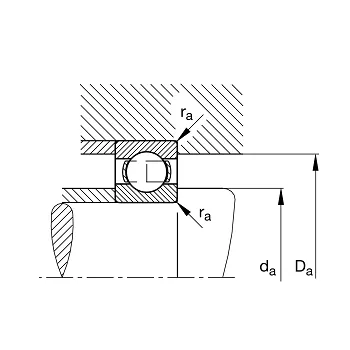Aug . 06, 2024 08:01 Back to list
Different Types of Bearings Commonly Utilized in Induction Motor Applications for Wholesale Trade
Wholesale Types of Bearings Used in Induction Motors
Induction motors are vital components in various industries due to their robustness, reliability, and efficiency. A critical aspect of these motors is the bearings that support the rotor and the stator, allowing smooth operation and minimizing friction. Understanding the different types of bearings used in induction motors, particularly in the wholesale market, is essential for manufacturers and suppliers aiming to optimize performance and ensure longevity.
1. Deep Groove Ball Bearings
Deep groove ball bearings are among the most common types utilized in induction motors. Their design allows them to accommodate both radial and axial loads, making them suitable for various operational conditions. These bearings are characterized by their simple structure, which consists of an inner race, an outer race, and a row of balls. Available in various sizes, deep groove ball bearings are cost-effective and widely used due to their versatility and ease of maintenance.
2. Cylindrical Roller Bearings
Cylindrical roller bearings are another popular choice for induction motors. They are designed to support high radial loads while providing lower friction than deep groove ball bearings. These bearings consist of cylindrical rollers that enable greater contact surface area, which enhances load-carrying capacity. Their design also allows for high-speed applications, making them ideal for motors that require smooth operation under various conditions.
3. Spherical Roller Bearings
Spherical roller bearings are particularly effective in applications prone to misalignment and heavy radial loads. The design includes two rows of symmetrical spherical rollers, enabling the bearing to handle both radial and axial loads in both directions. This characteristic makes spherical roller bearings an excellent choice for large induction motors used in heavy industries where shock loads and vibration are prevalent.
wholesale types of bearing used in induction motor

4. Tapered Roller Bearings
Tapered roller bearings are designed to manage both axial and radial loads effectively. Their tapered shape allows for better contact angles when subjected to load, making them ideal for applications that require high load capacity and reliability. In induction motors, tapered roller bearings are often used in the rotor shaft, providing support while minimizing wear and tear, thus extending the motor’s lifespan.
5. Angular Contact Ball Bearings
Angular contact ball bearings are specialized for applications requiring axial load support in addition to radial loads. Their design features a contact angle that allows them to handle significant axial forces. This capability makes them suitable for high-speed induction motors, particularly in applications like aerospace and precision machinery, where performance is critical.
6. Bearing Materials and Coatings
The materials and coatings of bearings also play a significant role in their performance. High-quality steel is commonly used for bearing races and balls, with some manufacturers opting for ceramic materials to enhance durability and reduce weight. Coatings, such as polymer or chrome, are applied to improve resistance to corrosion and wear, further extending the bearing's life in harsh operating conditions.
Conclusion
In the wholesale market, it is essential to understand the characteristics and applications of various bearing types used in induction motors. Deep groove ball bearings, cylindrical roller bearings, spherical roller bearings, tapered roller bearings, and angular contact ball bearings each offer unique advantages that cater to specific operational needs. As industries continue to evolve, the demand for high-quality, durable bearings will grow, highlighting the importance of selecting the right type of bearing for any induction motor application. Proper knowledge not only ensures optimal motor performance but also contributes to reducing maintenance costs and improving overall efficiency.
Latest news
-
25MM 2 BOLT UCFLX05-14 Flange bearing unit( oval)
NewsMar.07,2025
-
4 bolt UCF 200 series Pillow block bearings
NewsMar.07,2025
-
25MM 2 BOLT UCFLX05-14 Flange bearing unit( oval)
NewsMar.07,2025
-
UCF216-50 4-Bolt Flange Housing Square Bearing
NewsMar.07,2025
-
25MM 2 BOLT UCFLX05-14 Flange bearing unit( oval)
NewsMar.07,2025
-
spherical roller bearing material exporter
NewsMar.07,2025





